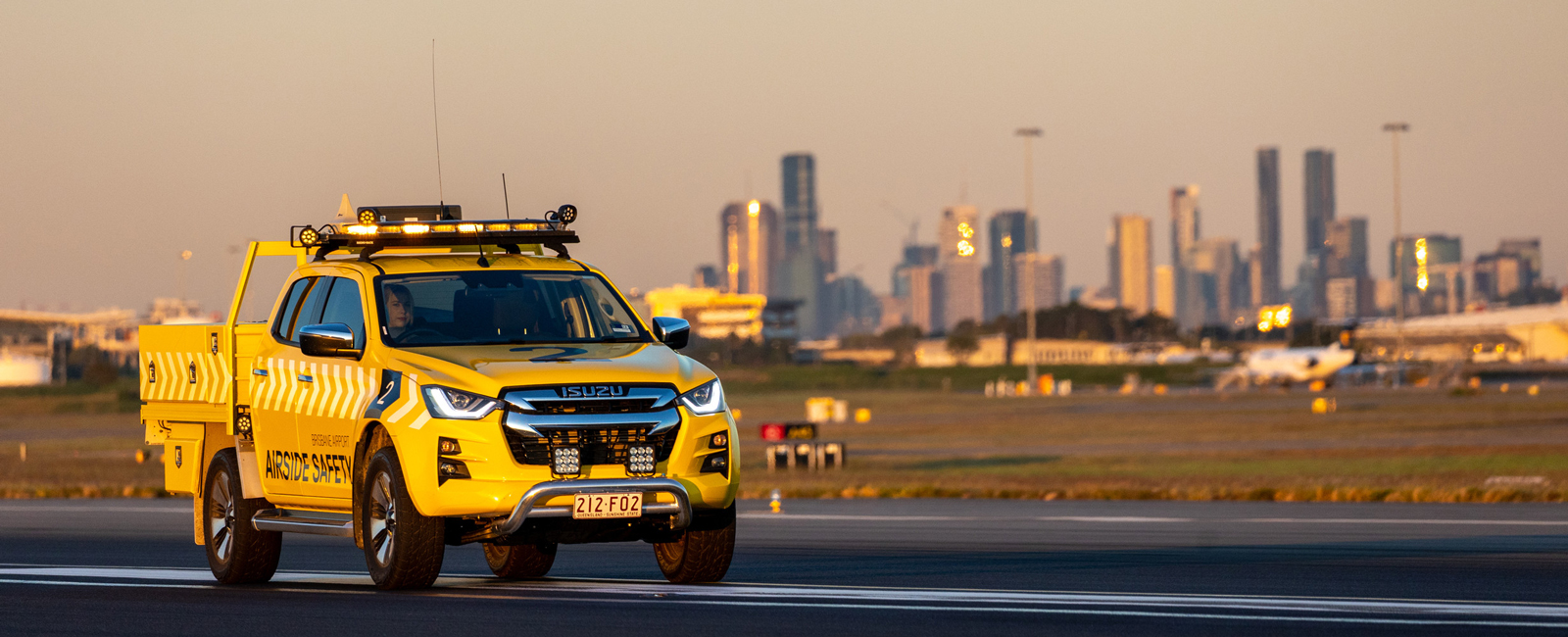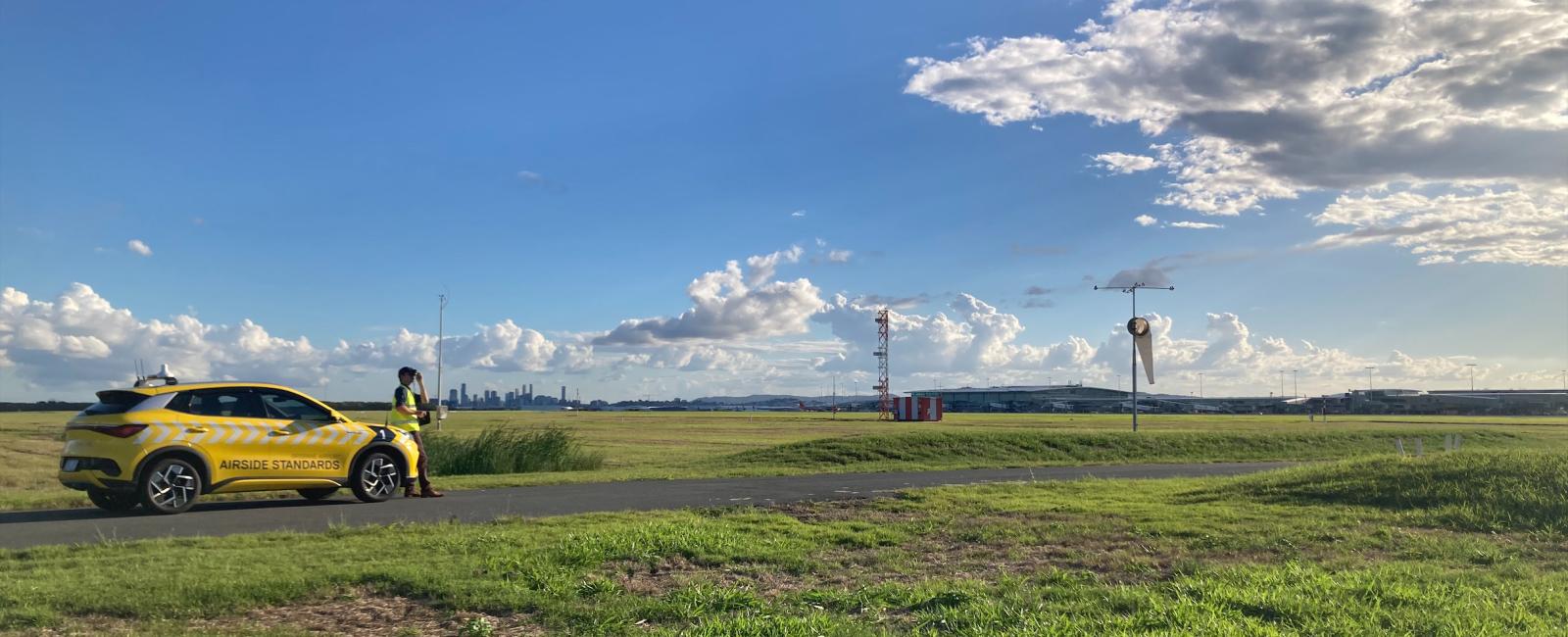
Meet Tom Ashover, the Wildlife Management and Planning Coordinator at Brisbane Airport Corporation, whose office is unlike any other. Tom's workspace includes runways, grassy fields, and natural habitats. With a conservationist's heart and a knack for aviation safety, Tom plays a vital role in balancing the natural environment with the busy 24/7 operations of Brisbane Airport.
"At the end of the day, the aim is to allow people to safely travel in and out of Brisbane Airport while looking after wildlife," Tom explains.
One of Tom’s main tasks is managing the risk of bird strikes. Bird strikes occur when a bird collides with an aircraft, sometimes causing damage, delay, and disruptions to service.
"We have a lot of management actions in place to reduce the diversity of the vegetation and, in turn, reduce insect activity and bird actions," he says. "We do daily bird counts to get a clear picture of the wildlife at the airport. This data helps us track and manage high-risk species around the runways and taxiways. In addition to these measures, Airside Safety Officers are out in the field every day dispersing wildlife as needed."
Tom also deals with the Brazilian Keyhole Wasp, an invasive species that poses a unique threat to aircraft. "These wasps like to make their nests in aircraft pitot tubes, which measure airspeed for pilots in flight. This can cause significant safety issues," Tom explains. "We address this risk through a Habitat Management Program that reduces wasp food sources and by working closely with airlines to ensure they cover their pitot tubes during turnarounds."
Despite the challenges, Tom finds his job incredibly rewarding. "Being in this role for three years, I've seen the vegetation makeup change over time, our strike rate start to reduce, and we've made significant progress with the Brazilian Keyhole Wasp," he shares.

The work is always evolving. "It's an ongoing task, and depending on the time of year, the risk profile changes. We always look for new, innovative ways to reduce that risk," Tom explains. "During nocturnal hours, we have a lot of flying foxes traversing the strip, and daytime brings different species depending on the season. My role is partly strategic, determining the direction of our Wildlife Management Program, but it also has a hands-on element."
Tom's work showcases the airport’s dedication to safety and innovation.
"In many ways, there's a great sense of responsibility in what we're doing. If we have a serious strike, there's an element of responsibility to check that we're doing everything possible to reduce that risk. It's never finished. Birds don't take a break, and neither do we."
Looking to the future, Tom hopes to continue seeing a reduction in wildlife strike risks and further progress in managing the Brazilian Keyhole Wasp. "I'm dedicated to this job, and so are the safety officers who work day-in, day-out, understanding the risks and actively working to manage them."
"The job is really rewarding. It's a perfect balance of overseeing the Wildlife Management Program and rolling up your sleeves to get involved out in the field. It's diverse; you never know what you're going to do or how your day will go."
Tom’s dedication and proactive approach ensure that every flight from Brisbane Airport is as safe as possible, making him an integral part of the People of BNE.
More information
Interested in a career at Brisbane Airport Corporation? Check out our careers page.

